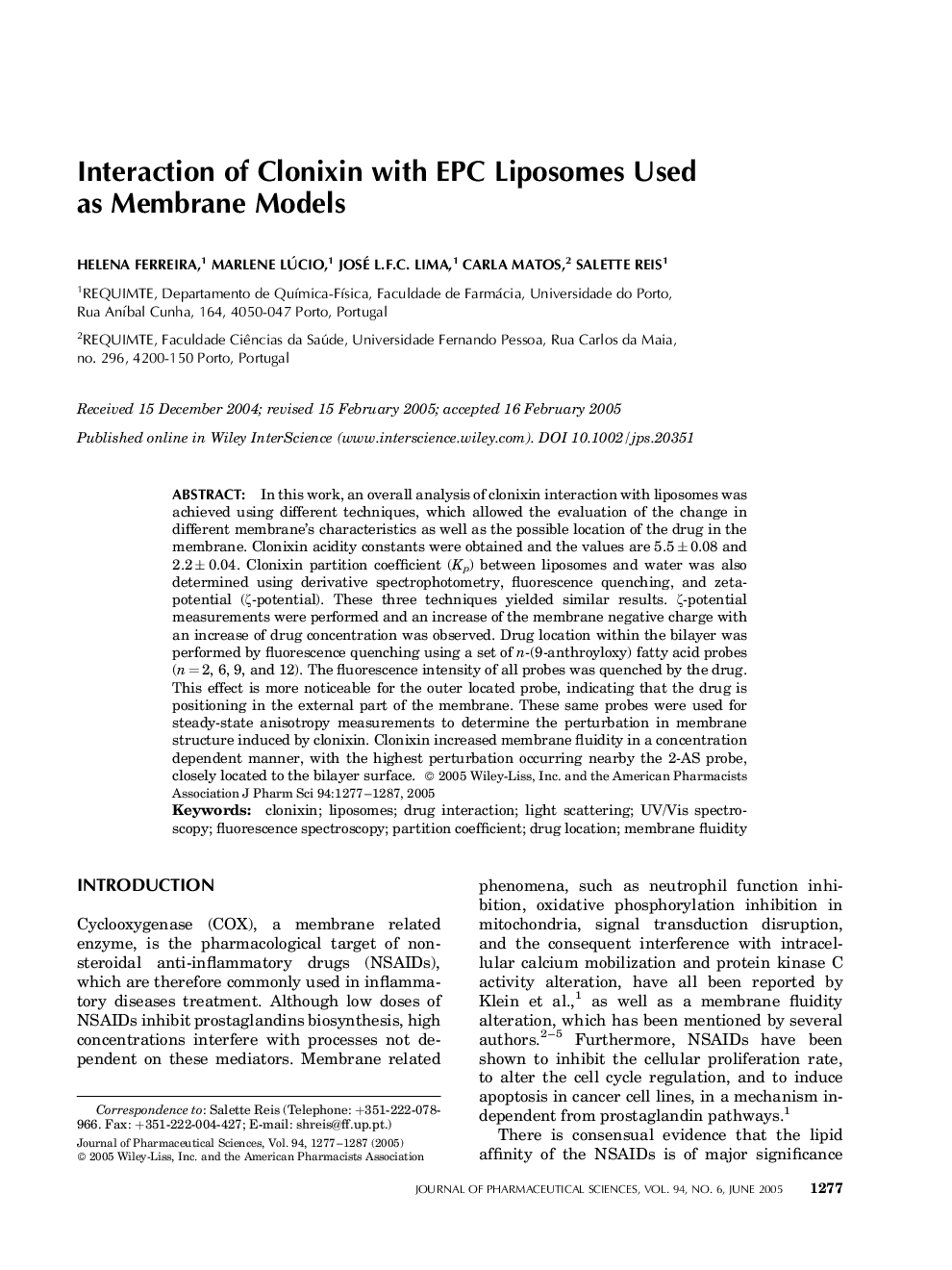| Article ID | Journal | Published Year | Pages | File Type |
|---|---|---|---|---|
| 8994660 | Journal of Pharmaceutical Sciences | 2005 | 11 Pages |
Abstract
In this work, an overall analysis of clonixin interaction with liposomes was achieved using different techniques, which allowed the evaluation of the change in different membrane's characteristics as well as the possible location of the drug in the membrane. Clonixin acidity constants were obtained and the values are 5.5 ± 0.08 and 2.2 ± 0.04. Clonixin partition coefficient (Kp) between liposomes and water was also determined using derivative spectrophotometry, fluorescence quenching, and zeta-potential (ζ-potential). These three techniques yielded similar results. ζ-potential measurements were performed and an increase of the membrane negative charge with an increase of drug concentration was observed. Drug location within the bilayer was performed by fluorescence quenching using a set of n-(9-anthroyloxy) fatty acid probes (n = 2, 6, 9, and 12). The fluorescence intensity of all probes was quenched by the drug. This effect is more noticeable for the outer located probe, indicating that the drug is positioning in the external part of the membrane. These same probes were used for steady-state anisotropy measurements to determine the perturbation in membrane structure induced by clonixin. Clonixin increased membrane fluidity in a concentration dependent manner, with the highest perturbation occurring nearby the 2-AS probe, closely located to the bilayer surface. © 2005 Wiley-Liss, Inc. and the American Pharmacists Association
Keywords
Related Topics
Health Sciences
Pharmacology, Toxicology and Pharmaceutical Science
Drug Discovery
Authors
Helena Ferreira, Marlene Lúcio, José L.F.C. Lima, Carla Matos, Salette Reis,
